Users Junyoung Kwon and Jimin Kwak, center, with Argonne physicists Mary Upton, left, and Jung Ho Kim, right, at the newly upgraded beamline 27-ID. Image by Mark Lopez, Argonne National Laboratory.
Progress In Pictures
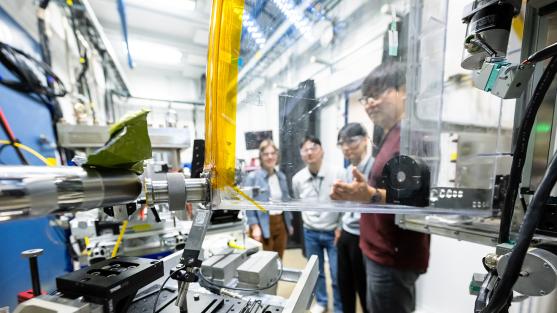
March 2025
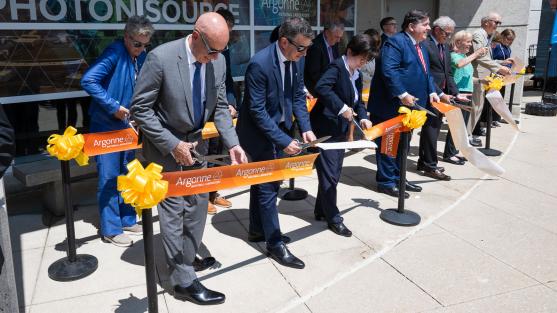
July 2024
Elected officials and leaders from DOE and Argonne cut the ribbon dedicating the upgraded Advanced Photon Source on July 17, 2024. Photo by Seth Hammond, Argonne National Laboratory
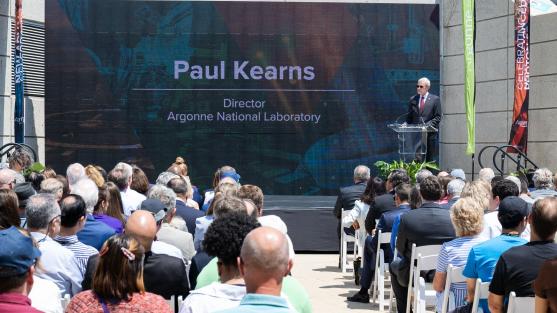
July 2024
Argonne Director Paul Kearns addresses the crowd at the dedication ceremony for the upgraded Advanced Photon Source on July 17, 2024. Photo by Seth Hammond, Argonne National Laboratory
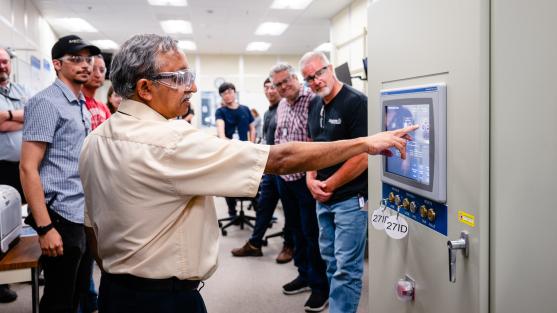
June 2024
Mohan Ramanathan, associate project manager for the APS Upgrade, opens the shutter at beamline 27-ID to let in the first upgraded X-ray light to a scientific beamline.
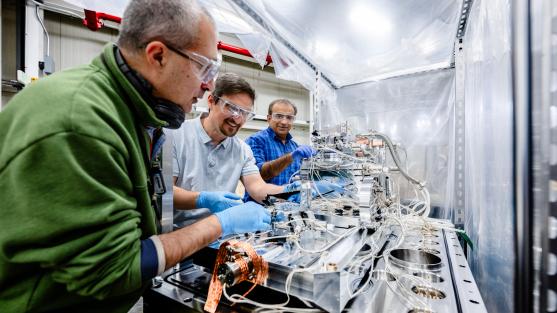
March 2024
Ali Mashayekhi, Sarvit Shastri and Peter Kenesei of XSD work on a monochromator for the HEXM feature beamline. Photo by Jason Creps, Argonne National Laboratory.
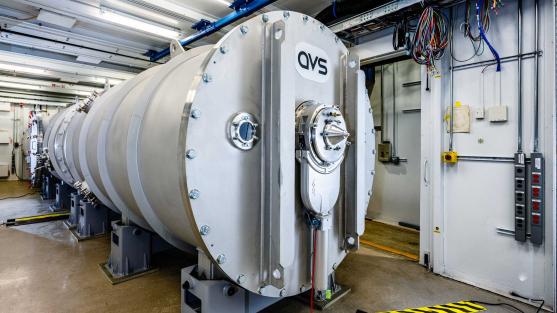
February 2024
The newly installed Small-Angle X-ray Scattering (SAXS) flight tube at beamline 12-ID. Photo by Jason Creps, Argonne National Laboratory.
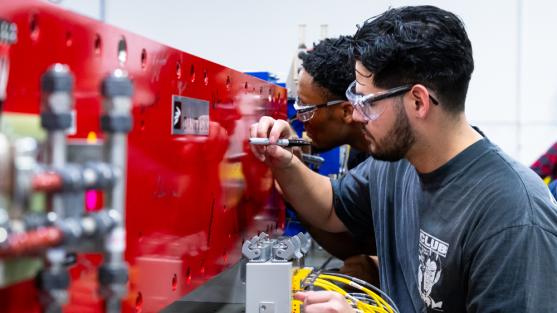
December 2023
Members of the APS Upgrade team signed one of the final magnets to be installed in the new storage ring on Dec. 11, 2023. Photo by Mark Lopez, Argonne National Laboratory.
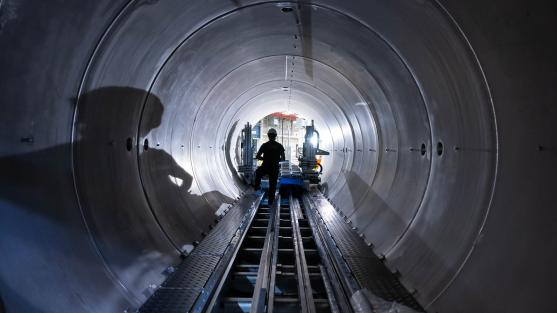
September 2023
A view from inside the Grand Tube, the enormous new detector under construction at the Coherent Surface Scattering Imaging (CSSI) feature beamline. Photo by Mark Lopez, Argonne National Laboratory.
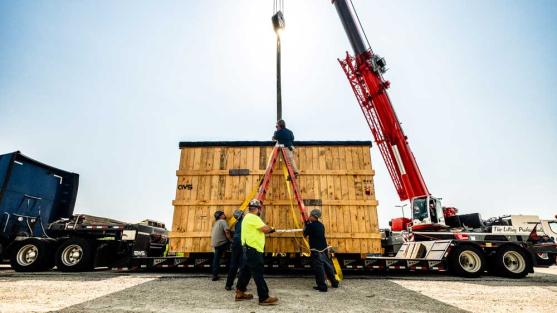
August 2023
Workers use a massive crane to unload the four sections of the Grand Tube for the CSSI beamline. Photo by Jason Creps, Argonne National Laboratory.
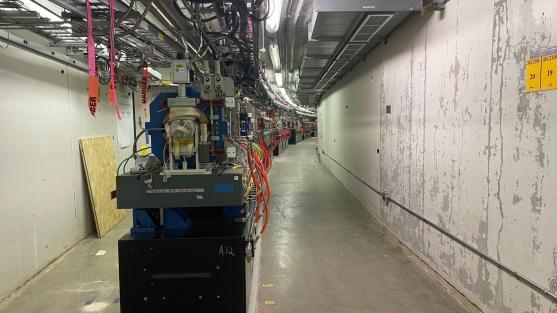
July 2023
Modules of the new APS storage ring installed in the tunnel. Photo by Mike Edelen, Argonne National Laboratory.
